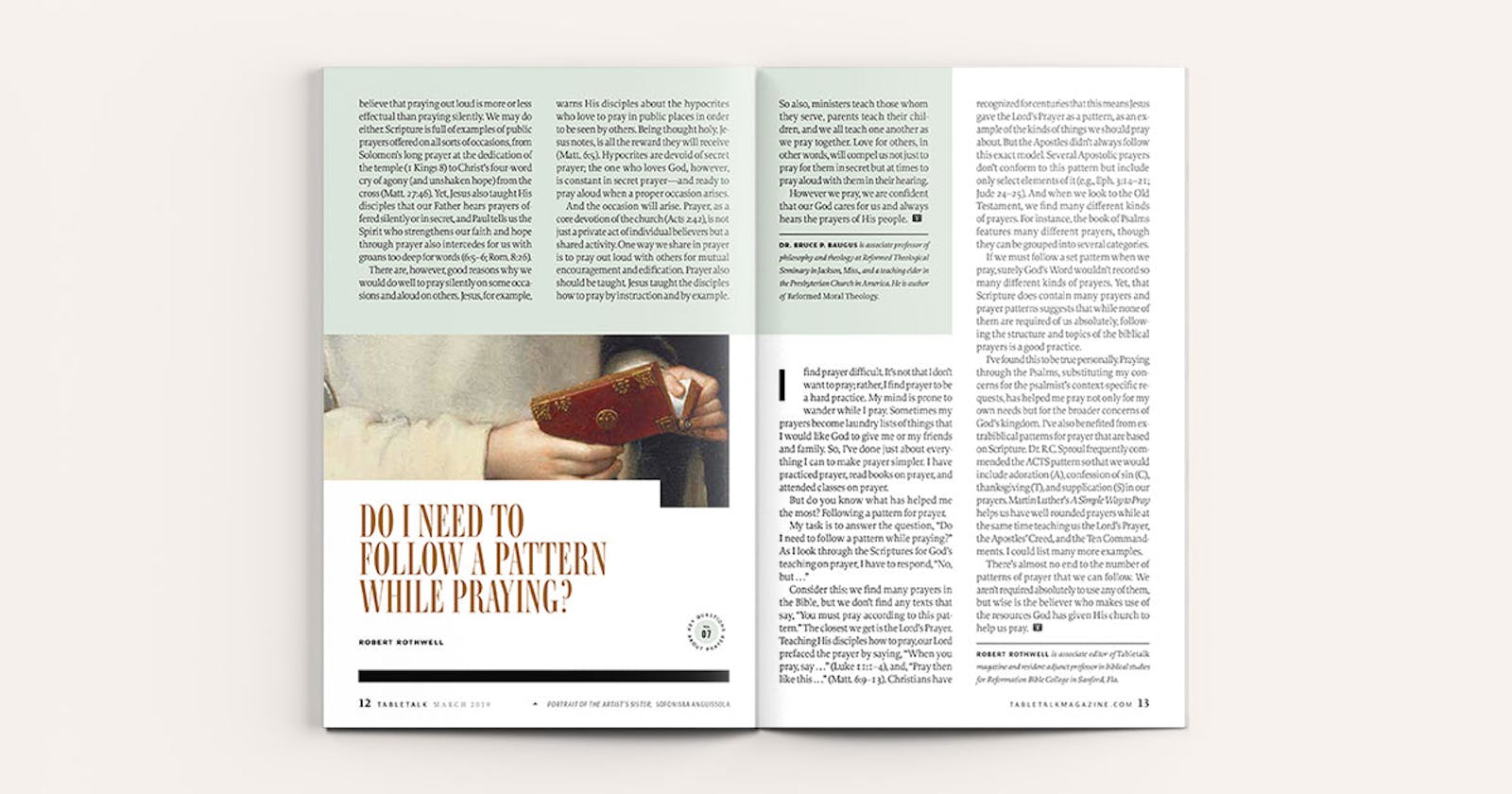
Request your free, three-month trial to Tabletalk magazine. You’ll receive the print issue monthly and gain immediate digital access to decades of archives. This trial is risk-free. No credit card required.
Try Tabletalk NowAlready receive Tabletalk magazine every month?
Verify your email address to gain unlimited access.
I find prayer difficult. It’s not that I don’t want to pray; rather, I find prayer to be a hard practice. My mind is prone to wander while I pray. Sometimes my prayers become laundry lists of things that I would like God to give me or my friends and family. So, I’ve done just about everything I can to make prayer simpler. I have practiced prayer, read books on prayer, and attended classes on prayer.
But do you know what has helped me the most? Following a pattern for prayer.
My task is to answer the question, “Do I need to follow a pattern while praying?” As I look through the Scriptures for God’s teaching on prayer, I have to respond, “No, but . . .”
Consider this: we find many prayers in the Bible, but we don’t find any texts that say, “You must pray according to this pattern.” The closest we get is the Lord’s Prayer. Teaching His disciples how to pray, our Lord prefaced the prayer by saying, “When you pray, say . . .” (Luke 11:1–4), and, “Pray then like this . . .” (Matt. 6:9–13). Christians have recognized for centuries that this means Jesus gave the Lord’s Prayer as a pattern, as an example of the kinds of things we should pray about. But the Apostles didn’t always follow this exact model. Several Apostolic prayers don’t conform to this pattern but include only select elements of it (e.g., Eph. 3:14–21; Jude 24–25). And when we look to the Old Testament, we find many different kinds of prayers. For instance, the book of Psalms features many different prayers, though they can be grouped into several categories.

If we must follow a set pattern when we pray, surely God’s Word wouldn’t record so many different kinds of prayers. Yet, that Scripture does contain many prayers and prayer patterns suggests that while none of them are required of us absolutely, following the structure and topics of the biblical prayers is a good practice.
I’ve found this to be true personally. Praying through the Psalms, substituting my concerns for the psalmist’s context-specific requests, has helped me pray not only for my own needs but for the broader concerns of God’s kingdom. I’ve also benefited from extrabiblical patterns for prayer that are based on Scripture. Dr. R.C. Sproul frequently commended the ACTS pattern so that we would include adoration (A), confession of sin (C), thanksgiving (T), and supplication (S) in our prayers. Martin Luther’s A Simple Way to Pray helps us have well-rounded prayers while at the same time teaching us the Lord’s Prayer, the Apostles’ Creed, and the Ten Commandments. I could list many more examples.
There’s almost no end to the number of patterns of prayer that we can follow. We aren’t required absolutely to use any of them, but wise is the believer who makes use of the resources God has given His church to help us pray.
